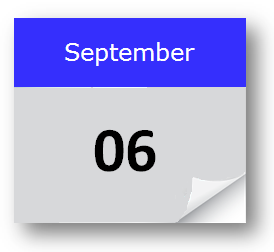In 1968 Swaziland became a member of the Commonwealth of Nations.
In 1991 The Soviet Union recognised the independence of Estonia, Latvia and Lithuania.
On the 11th of March 1985 the Communist Party gained a new leader, Mikhail Gorbachev, who was the first leader not to be alive during the original revolution. Gorbachev realised that in order to improve the economy he would have to introduce some new drastic changes. One of these changes was known as glasnost (which literally means publicity but was used to mean justice of governance) which was a drastic change in policy, giving Soviets much more freedom of speech and transparency of the government. Gorbachev hoped to eliminate corruption in the communist party. Gorbachev allowed privatising of companies for the first time to promote growth in the economy. He introduced a Presidential system on the 1st of July 1988 and allowed for multiparty free elections for the first time in Russia since the revolution of 1917.
Gorbachev also made huge changes in foreign policy through open talks with America and Britain. He made the first steps to reducing Soviet Nuclear weapons and urged the US to do the same which allowed for the end of the bitter “Cold War”. President Mikhail Gorbachev also changed a policy which stated that the USSR had the right to stop communist countries from changing their constitution. On March the 11th 1990 Lithuania (one of the republics of the USSR taken in World War II) took the unprecedented step as declaring their independence from the USSR.
Gorbachev had not meant for the policy change to extend to the republics of the USSR and he ordered them to retract their declaration of independence or face the consequences. They were given until the 17th of March but instead of obeying Russia they defiantly re-enforced their declaration by asking other nations to officially recognise their independence. Russia met this defiance by sending in troops to the Lithuanian capital city of Vilnius. Talks began between Moscow and Lithuania but they broke down by January 1991 and Russian troops began to open fire on Lithuanian civilians. A referendum held in February in Lithuania overwhelmingly calling for Independence. Their defiance led to 11 of the 12 other Soviet Republics to declare Independence and they formed the Commonwealth of Independent States. On the 6th of September 1991 The USSR was forced to recognise the independence of Lithuania, Estonia and Latvia.
In 1997 the Funeral of Diana, Princess of Wales took place in London.
Diana Spencer was born on the 1st of July 1961 and when her father, John Spencer, inherited the title of Earl Spencer in 1975 Diana became Lady Diana Spencer. On the 29th of July 1981 she married Charles, Prince of Wales and heir apparent to the throne of the United Kingdom. One year later on the 21st of June 1982 Diana gave birth to their first child, Prince William, Duke of Cambridge and second in line to the throne. On the 15th of September 1984 she gave birth to their second son Henry, Prince of Wales, Known as Prince Harry or Captain Harry Wales.
Princess Diana became famous all over the world for her charity work including her anti-landmine campaign “The International Campaign to Ban Landmines” as well as being the President of Great Ormond Street Hospital. On the 13th of July 1985, the most televised event in history, the “Live Aid” Concert was opened by Prince Charles and Princess Diana in Wembley Stadium, England. Princess Diana was given the unofficial title of “The People’s Princess” by her fans around the world.
Although the Princess had used her fame to publicise charities, aiding their public support, the constant intrusive nature of the press, particularly as her marriage with Prince Charles came to an end with divorce on the 28th of August 1996, caused much heart ache. The Press continued to hound her and every aspect of her life until, almost a year after her divorce, as her car attempted to escape the press in Paris, France a car accident took her life on the 31st of August 1997.
At 09:08 GMT on the 6th of August 1997 Diana’s coffin left Kensington Palace and began its four mile journey through London ending at Westminster Abbey. Her brother, son’s and their father followed the carriage on foot along the procession which was attended by over a million members of public that lined the route. Around the world 2.5 mourners watched the funeral via television (almost half of the worlds 5.8 billion population at the time). Two years later the French courts found the driver of the car, Henri Paul, to have been three times over the drink driving limit while driving over the speed limit (to evade the press).
